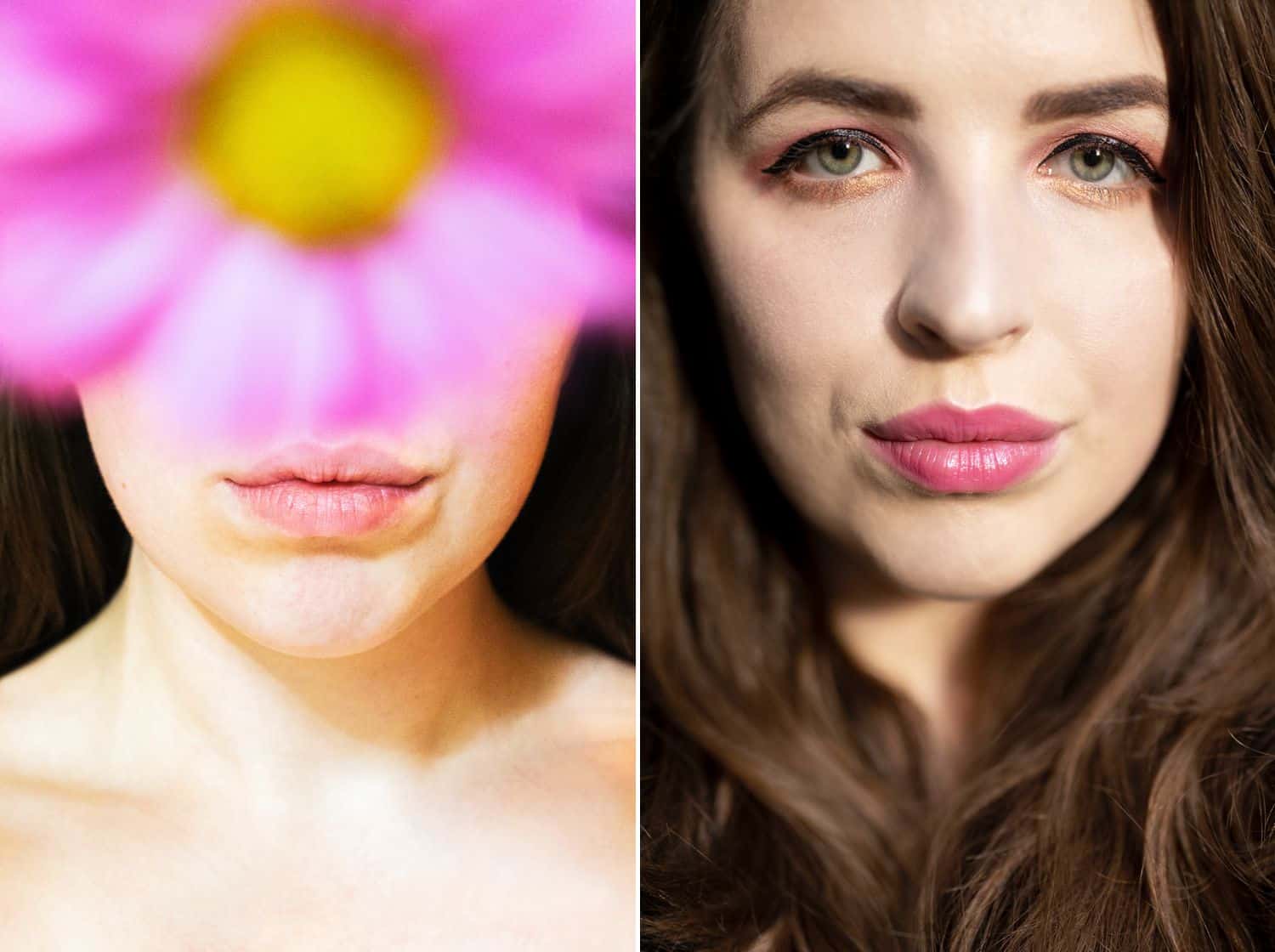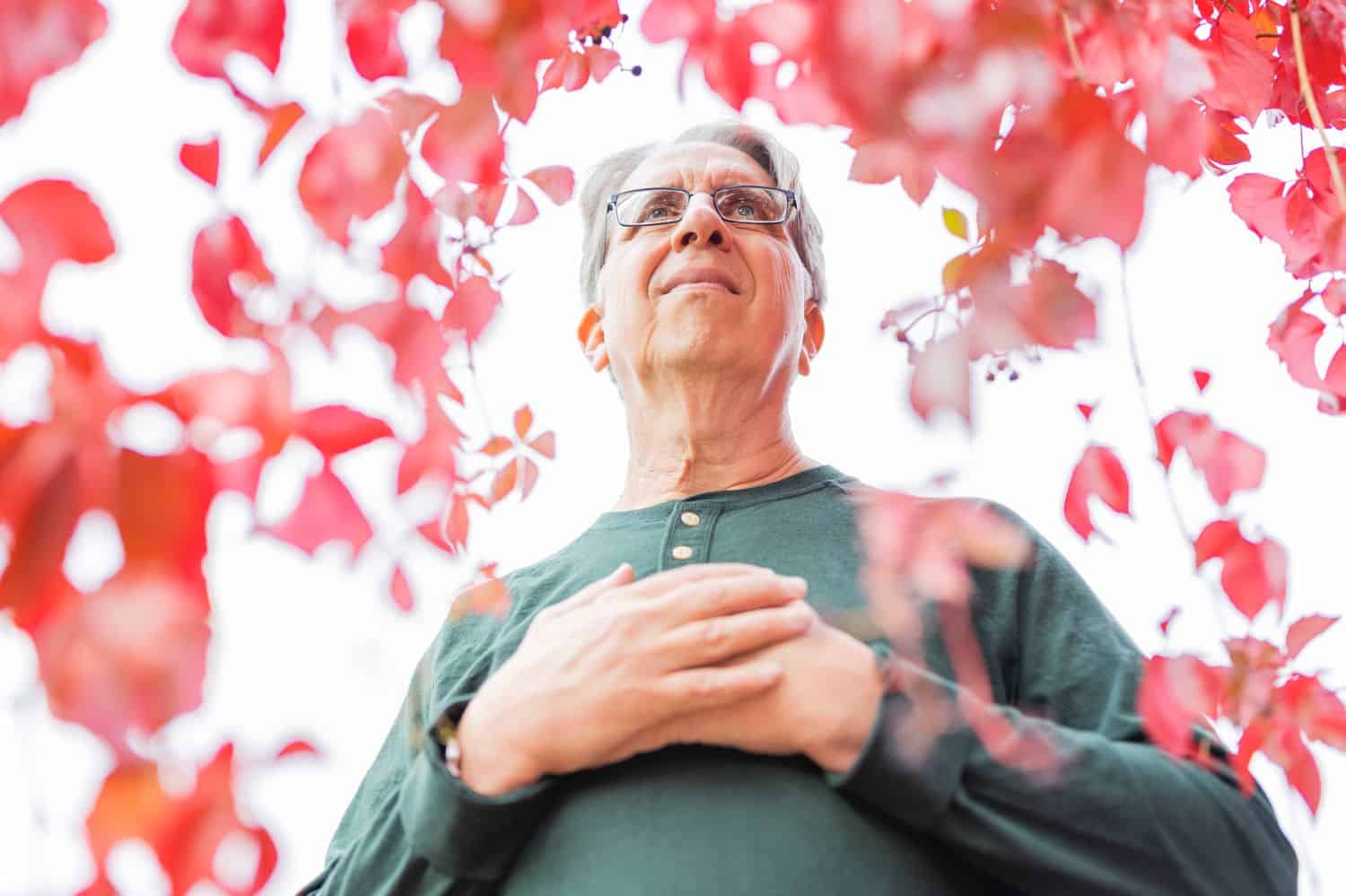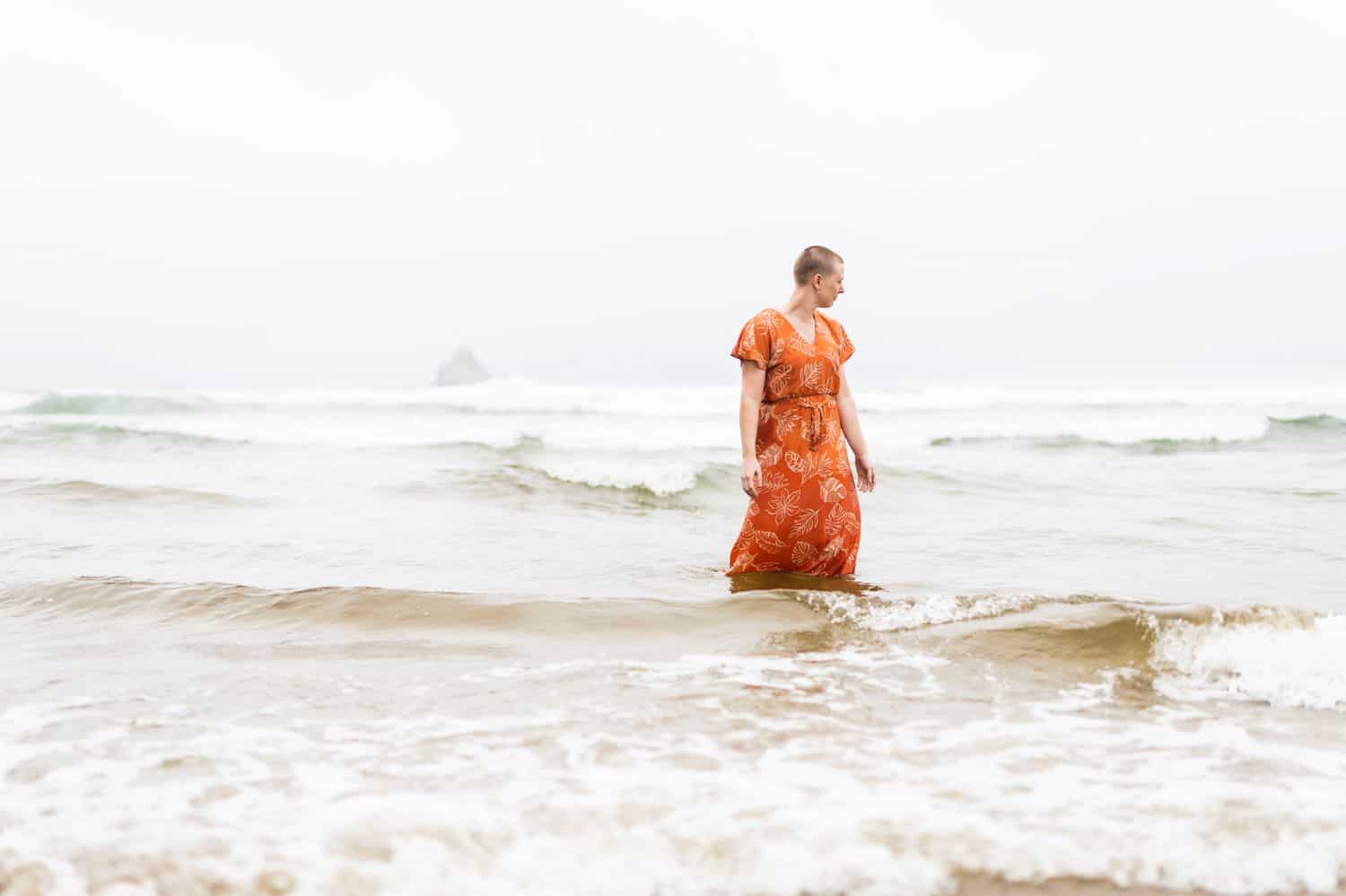
Photographers worldwide suffer from chronic pain. Whatever the cause, you can’t work unless you can manage the pain. Here’s how to cope—and thrive.
You know what doesn’t feel cool? When your friend or client asks what you did over the past couple of days and you think to yourself, Actually, I was in pain and did a lot of lying around. I have my medication game down though!
No one likes talking about being in pain. As photography business owners, we’re taught to be professional. Read: Don’t complain, be accommodating, and don’t discuss anything uncomfortable.
I’ve experienced chronic pain for the past several years, I promise: talking about it isn’t exactly a fun icebreaker. Why talk about it now, then?

Self-portraits of the author, Sofia Angelina
You Can’t Get Help Unless You Tell Someone
We all want to give our clients a great experience. The problem with chronic pain is that it complicates our experiences as business owners and makes it more difficult for us to provide stellar service to our clients. And if we don’t talk about it—don’t seek medical treatment, don’t acknowledge our suffering, don’t set boundaries that support wellness—our pain may eventually force us to stop doing the work we love most.
Is Photography Causing You Acute Pain?
In the U.S. alone, 20.4% of the population experiences chronic pain (CDC), i.e., pain that lasts longer than three to six months (NCBI). Being a business owner isn’t easy, and photography can create physical stress. Even though the stereotype is that only older adults have pain, all of us are susceptible.
Photographers carry a lot of heavy equipment, and we spend a good chunk of time in awkward, uncomfortable positions to get the perfect shot. Today’s digital cameras tend to weigh less than the film beasts of earlier generations, but we’re also taking more photos than ever before, which means more time spent with a camera around your neck.
I’ve frequently found myself straddling some weird furniture, basically playing Twister; or holding a baby in one hand and shooting in the other (don’t ask.) Not to mention all that culling, editing, and blogging at our computers that puts stress on our necks and backs.
In short, photography takes a toll on our bodies, and it can make existing pain worse. And if you’re also the “proud” owner of an unrelated pain condition, you probably feel overwhelmed, under-supported, and even unseen.
#ShootProofPRO Tip: Get Familiar with Pain Conditions
If you’ve never experienced long-term pain, you may find it difficult to comprehend. In fact, Harvard Medical School refers to chronic pain as “the invisible disability.”
To better understand people who struggle with a pain condition, it helps to learn what this kind of pain can feel like. Do your research on fibromyalgia, complex regional pain syndrome, chronic pain syndrome, arthritis, multiple sclerosis, shingles, neuropathy (a nervous system condition), migraine, Lyme disease, and many others. This exploration will help you support others in your community, and better prepare you to take care of yourself should you ever experience chronic pain.

Sofia Angelina
Here’s How Pain Almost Took Over My Life
Back pain became a huge problem for me around the time I turned 21.
My wellness habits weren’t awesome at the time. I’d wake up early every morning in a rush, run to work wearing a huge backpack, then spend the second half of my day at school. I tackled four hilly miles every day with my monstrous pack, and spent additional hours huddled over a computer or a book. My motto was Work Hard and then Work Harder.
Rather than rest in my off time, I’d practice photography or take an exercise class. Then one day I pulled a muscle. I planned to stop exercising for a while so I could heal, but I didn’t take my pain that seriously.
I figured, hey, I’m young! My body will totally get through this. I’ve got nothing to worry about. But my pain didn’t go away, and eventually it turned into chronic pain, with regular tension headaches that became migraines.
Invisible Pain is Still Pain
When I began my photography business, I traded my heavy backpack for equally heavy camera gear, which only worsened my pain problems. Yet I continued avoiding the doctor. When your pain is invisible, it’s tempting to ignore it or push it off. Eventually my pain got so bad, I wasn’t even moving my body outside of my photography sessions.
Now at 26, I finally take better care of myself. I do physical therapy exercises, move my body regularly, and get plenty of sleep—all of which help reduce pain. However, I still struggle with back pain and migraine headaches that can steal entire days out of my life. As a photographer and business owner, this is far from ideal.

Sofia Angelina
Take Control of Your Chronic Pain
We’re living in a stressful time (perhaps you’ve noticed?). Many of us photographers are sensitive and emotional “artist types.” Our sensitivity can make handling stress extra-tough. In a time like this when there’s plenty of stress (and pain) to go around, we must make our health our top priority.
For starters, you need a pain strategy.
Chronic pain complicates the way you run your business. You have to schedule and plan more strategically than others. Chronic pain makes life more difficult, but it’s also taught me how to better care for myself.
So, what can you do if you’re a photography business owner experiencing regular, debilitating pain?
Get Organized
If you’re like me, your pain can surface at any time. You can’t always plan for the pain, but you can get organized.
If you haven’t already, streamline your workflow. ShootProof is a powerful tool that helps you keep your work in one place. Use ShootProof’s contracts and invoices to keep your legal documents and payment schedules in one place. And ShootProof email templates help you craft sales campaigns that you can use repeatedly for different clients.
In short, if any task is taking up a ton of your time, think of ways you can simplify.
- Outsource. Editing, accounting, and in-person sales are all examples of tasks you can outsource.
- Use the right tools. ShootProof is just one tool that can speed up your workflow. Also review the tools you use for culling, retouching, booking, etc.
- Eliminate unnecessary steps. Review your workflow for anything that needs to go. Maybe you need a more streamlined backup system. Or maybe you’re wasting time still burning DVDs that no one can open.
Reduce your workload, and you’ll be one step closer to having more control over your pain.

Sofia Angelina
Schedule Rest (Then Actually Go Rest!)
As a self-identified workaholic, I don’t always know when to stop. Schedule times throughout your workday to take breaks. Literally put rest on your calendar.
Also, consider scheduling a weekly tech-free day in which you don’t check your social media or answer email. And while you’re not overwhelming your system with technology, read Do Nothing by Celeste Headlee. A bit of guided encouragement always helps!
Go to Physical Therapy (Like, Yesterday)
In addition to rest, you need to make time to strengthen your body and actively support its functions. For many people, daily home exercise is enough. But if you’re faced with an injury or chronic pain, physical therapy may be in order. I avoided physical therapy for years because:
- a) I thought my body would heal on its own (it didn’t), and
- b) I convinced myself I didn’t have time for physical therapy (I did.)
Eventually, I had to make time. My pain eventually got bad enough that I couldn’t ignore it. The longer you ignore your pain, the slower your body will heal.
Other excellent forms of body conditioning that helps photographers are:
- yoga
- therapeutic stretching
- foam rollers to relax muscle tension
- eat nutritious food
- stay hydrated (this means water, not coffee!)
- weight lifting
- walking (yes, walking; you don’t have to run for it to count!)

Sofia Angelina
Create a Work-Only Workspace
Many home-based business owners have difficulty transitioning from work to rest. You’re not leaving an office, so you don’t have that physical transition at the end of your workday.
If you can, dedicate a room or area in your home specifically to work. Resist the urge to work in the kitchen, the bedroom, or the living room. Instead, give yourself full permission to chill when you’re not in your office, whether or not it’s a fully-furnished office space.
Don’t Buy Into “Hustle Culture”
Photographers have to wear a zillion hats: you’re the face of your business, a creator, an editor, a content writer, a marketer, a social media manager… Don’t make things even more complicated than they need to be!
What’s actually working for your business? What’s worth your time? Pay attention to the ROI (return on investment) of your actions. If you’re working really hard on something that isn’t effective for your business, don’t do it just because you took a webinar that told you that you had to.
You don’t have to do every. single. thing. Find out what works for your business, and do that.

Sofia Angelina
Get Serious About Your Health—Even if You’re Young
I ignored my pain for a long time because I thought my body would simply heal itself. Also, people didn’t expect me to be in pain. People don’t usually look at a young photographer and think, they must have chronic pain. Active people, especially young people, are generally assumed to be perfectly healthy.
Your friends might not understand when you need to stay home and chill. That’s okay. Not everyone has to understand. It’s important that you take your health seriously, even if others don’t.
#ShootProofPRO Tip: Mental Health Matters
Mental health conditions don’t just cause emotional discomfort; they also cause very real physical pain. (Mayo Clinic) Everything from depression to anxiety to ADHD can contribute to long-term pain and disrupt your daily activities. Prioritize mental health screenings, and talk to your doctors about how you can treat chronic pain that stems from mental illness.
Prioritize Effective Health Habits
I tend to have pain flare-ups when I slack on my sleeping or eating schedule. If I don’t get enough sleep, or if I sleep at weird hours, I’ll feel it. If I don’t feed myself, or if I try to survive only on coffee (which I sometimes try, let’s be honest), I feel it. And I love sweets, but sometimes sugar triggers a headache.
Consider keeping a journal documenting your eating and sleeping habits. Notice what’s nourishing for or hard on your body. Once you recognize a pattern that feels good, stick to it as much as possible.

Sofia Angelina
Lighten Your Load (Literally)
Can you simplify your camera bag to make it lighter? Are you carrying equipment that you don’t actually use? Perform the same audit on your photography equipment as you’ve done on your workflow. If it’s not working for you or your business, you don’t need it.
Your home office may also be a pain culprit. If you haven’t already, invest in a sit/stand desk and a large monitor. I worked for years on a small laptop, and editing while hunched over my tiny screen didn’t do any good for my back.
Invest in these items to improve your overall lifestyle and work experience:
- smaller camera bags
- bags with wheels
- a strong assistant whose sole job is to carry your stuff
- braces that support painful joints, like knees, low back, and wrists
- an ergonomic desk chair
- harness camera straps that distribute weight away from your neck
Equipment that’s ergonomic and encourages good posture will ultimately save you time, stress, and probably money. It has for me.

Sofia Angelina
#ShootProofPRO Tip: Pack a Medical Bag
Pain, in many people, is indicative of a larger issue. If your pain condition occasionally knocks you out of commission, you should never leave home without the following:
- rescue pain medicine—whatever you take to reduce pain during an attack
- preventive pain relievers—whatever helps you address inflammation and other symptoms before they become more severe
- medical bracelet or card that defines your condition to anyone who may be present during an attack (e.g., fainting, seizures, etc.)
- emergency call list with the names and numbers of trusted friends, family, or medical professionals
Make Your Photo Sessions Work for YOU, Not the Other Way Around
Some photo sessions are more fast paced than others. Some types of work will bore you to tears, while others will make you feel genuinely stoked to show up.
I used to try to shoot everything: weddings, corporate events, headshots, branding sessions, family sessions, and couples sessions. Not only was this an ineffective business strategy, I also didn’t enjoy all photography equally. So I started saying no.
Now, I offer what I call Healing Sessions, in which I combine creative portraiture and energy work. My Healing Sessions pique my creativity, connect me more deeply with my clients, and are generally slower-paced. They’re good for my brain and my body.

Sofia Angelina
Brainstorm Passive Income Ideas
Do you like teaching and have a style that clients and fellow photographers love? You could create a simple mini course that teaches photographers how to mimic your specific style, or how to turn one-time clients into loyal customers.
If you love creating beautiful landscapes, set up a print shop in a public ShootProof gallery and sell fine art prints. People love putting unique art on their walls!
Are you an Instagram nerd? Make a workbook that helps other photographers up their IG game.
And of course, take advantage of ShootProof’s marketing features! ShootProof makes it easy to sell to your clients when you’re off the clock. Pair a couple of fun automated emails with a clever marketing banner, and give your clients access to expired galleries so they can buy prints!
See how photographer Justin J. Wee explores chronic pain signals using digital photography.

Sofia Angelina
Remember: You’re an Expert in Your Own Body
Having chronic pain is hard. It’s no fun to feel like your body is keeping you from relaxing or enjoying your day.
Ultimately, those of us with chronic pain have to become experts in boundary-setting and in knowing our bodies’ needs. I wouldn’t say I’m grateful for my pain, but it’s certainly pushed me to reevaluate how I work and live. I work shorter hours when possible, spend less time scrolling social, and spend more time doing what I enjoy.
Now that I have a greater understanding of how valuable my time is, I know that making time for pleasure and rest is one of the best things I can do for myself.
Do you struggle with chronic pain? Share your own tips for pain management in the comments below!
Written by SOFIA ANGELINA MARCUS-MYERS and ANNE SIMONE | Photographs by SOFIA ANGELINA


